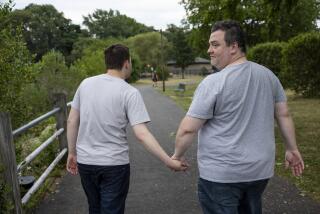FOR KIDS : Thought Provoking : Siegfried Othmer says brain-wave training can help children with learning disabilities and other disorders.
- Share via
To the uninitiated, it sounds weird, strange, even screwy, but to Siegfried Othmer--and numerous others who swear that it really works--the notion is lyrical: You can train your brain.
Adults can train their brains.
Children can train their brains.
More precisely, they can alter their brain waves.
In particular, Othmer says children with learning disabilities, attention disorders, hyperactivity, night terrors, insomnia, severe mood swings and head trauma can be helped by something called electroencephalogram (EEG) biofeedback.
This is how it works: An electrode is applied to the scalp, the electrical activity in the brain is amplified and observed on a monitor, and whatever disorder is present supposedly manifests itself through the brain waves in the EEG.
“It’s like listening to an engine under the hood,” says Othmer, who started EEG Spectrum Inc.--a kind of spa for the brain--in Encino three years ago. “Some kids’ brains aren’t working as smoothly as other kids’ brains,” he says.
Once the irregularities in the brain waves are discerned, children are asked to “normalize” them by attentively playing a video game. According to Othmer, as activity in a desirable frequency band increases, the video game moves faster. As activity in adverse bands increases, the video game slows. Eventually, the brain responds to the cues and learns a more normal brain-wave pattern.
In simple terms, when the brain is doing the right thing, the video game works; when it’s not, it doesn’t. The brain picks up on this and gradually does the right thing.
Typically, learning-disabled children require “about 40 half-hour sessions,” says Othmer, who has a doctorate in physics from Cornell University. “In most children, the change is permanent. Sometimes there is some backsliding and booster sessions are beneficial.”
Since opening his Encino office--and five others around the state--Othmer says his staff has treated more than 200 patients. He charges an initial testing fee of $100, and $50 for each subsequent session.
David Wells of Encino sent his hyperactive 9-year-old son to EEG Spectrum for 40 sessions of brain training and says the treatments have been effective.
“He was significantly helped by the treatment,” says Wells, a chiropractor who has advised some patients to undergo brain-wave training at Othmer’s office. “After my son started, his teacher came to us and commented that he was paying better attention in class, that he was calmer and more focused. His reading really took off.”
The treatments are based on research done by Dr. Barry Sterman of the UCLA School of Medicine, who, Othmer says, developed the technique for epilepsy. Also, Joel Lubar, a professor of psychology at the University of Tennessee, originally used the technique for hyperactivity, attention-deficit disorder and learning disabilities in the late 1970s and early 1980s.
Not everyone is convinced, however, of EEG biofeedback’s effectiveness for treating conditions such as attention-deficit disorder and other learning disabilities.
One professor of psychiatry, speaking on condition of anonymity, calls brain-wave training “not very useful, not practical.”
“Everybody’s looked for exotic things,” he adds. “This is academically interesting, but it doesn’t look like it will be very helpful.”
Russell Barkley, professor of psychiatry and neurology and director of psychology at the University of Massachusetts Medical Center, reviewed the research behind EEG biofeedback treatment for two parents’ organizations: Children with Attention Deficit Disorder and the Attention Deficit Disorder Assn.
According to Barkley, the technique used by Othmer and others is understudied and requires more research before its merits can be confirmed.
“A lot of information is lacking,” Barkley says. “The studies that have been done are pilot studies, not large-scale research studies. There’s not enough known for this to be considered a proven treatment.
“When it is finally studied, my bet is it will be found to make some minor improvements, but none that are permanent. . . .
“It would be miraculous if their claims are true. Our task force conclusion was ‘buyer beware.’ ”
Still, others say the technique holds more promise than other treatments.
Clifford Marks, a clinical psychologist who studied 15 learning-disabled children as they underwent brain-wave training over a nine-month period, says the children’s IQs went up an average of 20 points.
“This is the best thing I’ve seen in 25 years of working with learning-disabled children,” Marks says. “It actually changes the brain pattern. It allows natural intelligence to come out.”






